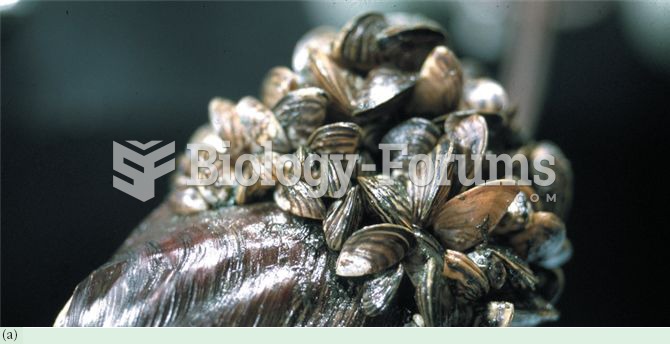Answer to Question 1(a) The behavior of some animals in a public place (including potential of a bite)
(b) Contamination (dirt, parasites, hair)
(c) Other diners' aversion to animals
(d) Zoonotic potential
Students may also think of several other reasons, such as begging for food, knocking over tables and chairs,
running into people, dogs fighting with each other, getting in the waste cans, and so on. Credit should be
given for any reasonable answer
Answer to Question 2Fin rot is a condition especially prevalent in brightly colored fish or those with long, trailing fins, such as
the black mollies. The edges of the fins will start to lose their color, the tissue between the rays will begin to
break down, and the fins will become ragged. The fins become shorter as the condition persists. The disease is
believed to be caused by a bacterium, along with a contributing factor such as a vitamin-deficient diet, poor
water conditions, or fin nipping by other fish. Commercially prepared treatments are available; treatment of
marine species may be more difficult.
Answer to Question 3Two species of flukes that can cause problems are Dactylogyrus and Gyrodactylus. Resulting damage from
both can be fatal, depending on the degree of infestation. Flukes are tiny, worm-like parasites that attach
themselves to the gills and body of a fish. They have numerous hooks on the rear part of their bodies
and sucking mouths. A single fluke has both male and female reproductive organs (hermaphroditism).
Dactylogyrus permanently attach themselves to the gills. Fish affected with Dactylogyrus will have rapidly
moving gills, swim at the surface, and pant heavily, trying to obtain more oxygen. Their gills will be covered
with slime, and parts of the gills may be eaten away. Fish may also scrape their bodies up against objects
trying to relieve the irritation. Gyrodactylus primarily attach themselves to the body of the fish. The infected
fish will also scrape up against objects; their color will fade; the fish will produce more slime in response to
the irritation; and the fins may also become ragged and eaten away. Commercial treatments are available at
pet stores with fish supplies. Infected fish should be removed and treated in a hospital aquarium quarantine.
The aquarium that the fish were removed from should be thoroughly cleaned before returning fish to it.
Answer to Question 4 White spot or IchThis is characterized by white spots on body and fins. Chemicals to prevent white
spot are available in pet stores that deal with fish.
Slime diseaseLarge amounts of mucus are present in fish with slime disease. Chemical water treatments
are preventative.
Hole-in-the-head diseaseLarge, open sores around the head, dorsal line, and dorsal fin are signs of this
disease. Metronidazole or dimetridazole added to the water is the recommended treatment. Consult with
your veterinarian.
Velvet disease and coral diseaseBoth diseases appear as a velvet-like, gold coating on the fish's sides.
Copper-based treatments can be added to the water. Some species may not tolerate copper. You may want
to consult with your veterinarian.
Fungus growthsWhite fungus growths appear on the fins, mouth, eyes, and gills. Commercial treatments
are available at pet stores with fish supplies
Answer to Question 5(a) Unusual behavior such as swimming movements
(b) A fish leaning to the side, floating to the surface, or sinking to the bottom
(c) Fins not extended and laying flat against the body
(d) Caudal fins closed or rolled
(e) A fish shying away from the shoal
(f) A fish slower in its movements than others
(g) Respiration faster and deeper than normal
(h) Fish up on the surface, gasping for air
(i) Fish that are rubbing against decorations on the bottom
(j) Fish that are not eating
(k) Fish that are thin with sunken sides
(l) Abnormally large or swollen belly
(m) Abnormal color
(n) Frayed fins
(o) Malformation of the back and spinal column
(p) Cloudiness of the eyes
(q) Scales sticking out away from the body instead of lying flat







